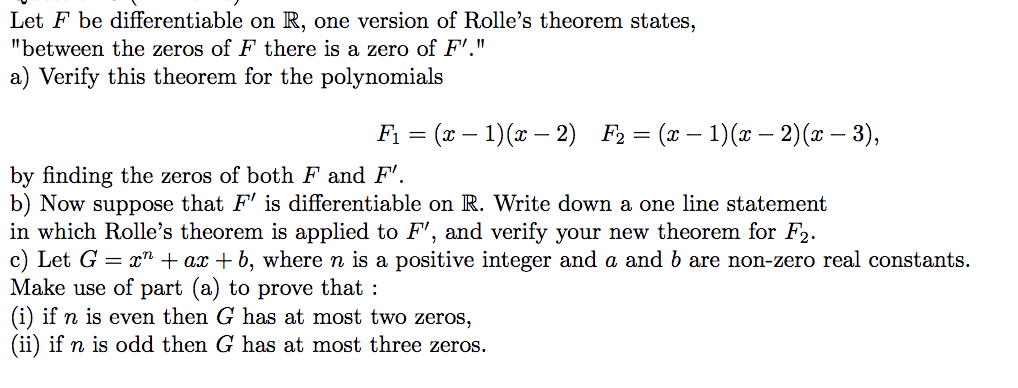MATH 100 Lecture Notes - Lecture 2: Differentiable Function, Power Rule, Constant Function

Math 100
Lesson 2.2 – Basic Differentiation Rules and Rates of Change
• Theorem 2.2: Constant Rule
Derivative of a constant function is 0. That is if C is a real number, then:
• Theorem 2.3: Power Rule
If n is a rational number, then the function f(x) = xn is differentiable and
. For f to be differentiable at x=0, n must be a number such that xn-1
is defined on an interval containing 0.
*Note: when using the Power Rule, the case for which n=1 is best thought of as a
separate differentiation rule. That is
• Theorem 2.4: Constant Multiple Rule
If f is a differentiable function and C is a real number, then c*f is also differentiable.
Also,
. A combination of the power rule and this rule is in the form
.
• Theorem 2.5: Sum and Difference Rules
The sum (or difference) of two differentiable functions f & g is itself differentiable. The
derivative of f + g (or f – g) is the sum or difference of both derivatives.
su rule
differece rule
• Theorem 2.6: Derivatives of Sine and Cosine
find more resources at oneclass.com
find more resources at oneclass.com
Document Summary
Lesson 2. 2 (cid:862)basic differentiation rules and rates of change(cid:863) Math 100: theorem 2. 2: constant rule, theorem 2. 3: power rule. That is if c is a real number, then: If n is a rational number, then the function f(x) = xn is differentiable and is defined on an interval containing 0. (cid:1856)(cid:1856)[]=(cid:882) (cid:3031)(cid:3031)[(cid:3041)]=(cid:1866) (cid:3041) (cid:2869) . For f to be differentiable at x=0, n must be a number such that xn-1 separate differentiation rule. A combination of the power rule and this rule is in the form (cid:3031)(cid:3031)[(cid:1855)(cid:3041)]=(cid:1855)(cid:1866)(cid:3041) (cid:2869) . If f is a differentiable function and c is a real number, then c*f is also differentiable. *note: when using the power rule, the case for which n=1 is best thought of as a: theorem 2. 4: constant multiple rule, theorem 2. 5: sum and difference rules. The sum (or difference) of two differentiable functions f & g is itself differentiable.







